
Drummer Peter Orins expands the Kaze quartet of trumpeters Natsuki Tamura and Christian Pruvost and pianist Satoko Fujii, with a second drummmer--Didier Lasserre--and a second pianist--Sophie Agnel--for a live recording of a 5-part suite of magnificently epic collective improv.
In Stock
Quantity in Basket: None
Log In to use our Wish List
Shipping Weight: 3.00 units
EU & UK Customers:
Discogs.com can handle your VAT payments
So please order through Discogs
Sample The Album:
Didier Lasserre-drums
Peter Orins-drums
Satoko Fujii-piano
Sophie Agnel-piano
Christian Pruvost-trumpet
Natsuki Tamura-trumpet
Click an artist name above to see in-stock items for that artist.
UPC: 191061095019
Label: Helix Circum-Disc
Catalog ID: LX009
Squidco Product Code: 23665
Format: CD
Condition: New
Released: 2017
Country: France
Packaging: Cardboard foldover
Recorded live at La Malterie, Lille, France, on June 30th, 2016 by Peter Orins.
"June introduces Trouble Kaze, the moniker chosen for the newly reshaped combo which adds a second pianist and drummer to the original line-up. "The band can be conceived either as a triple duo or a double trio, hence trouble," explains Peter Orins, who suggested the formation of both Kaze and Trouble Kaze. "Moreover, the word also underlines the ambiguity of the situation." The title of the album comes from the fact that the band was caught on June 20, 2016, which signaled the end of spring, the longest day of the year, and the summer solstice.
The five-part suite was recorded during the band's third performance at La Malterie in Lille, France, a venue that serves as an incubator for artists and also presents concerts. By that time, the sextet had already decided to change their modus operandi. Initially, Orins had envisioned having a road map that would structure the improvisation. By the second concert, they had already given up on that process. This explains why the music develops so organically, with spaces left to silence and minimalism, as the artists work on textures and create a sense of mystery-it is sometimes difficult to identify who is responsible for the otherworldly sounds that can be heard throughout the recording.
While the music is deeply steeped in abstraction, the musicians know when to inject a touch of humor or let their emotions run free. The second part ends with a slow crescendo while the third one concludes in a joyous chaos. The band make extensive use of extended techniques-a term that describes unconventional use of an instrument-including Pruvost's signature of a plastic tube to blow in his trumpet, with Orins and Lasserre in the roles of percussionists rather than drummers. Agnel and Lasserre perfectly blend with the other members of the band. "Very quickly, Christian and I thought about Sophie and Didier because we've known them and played with them for years," Orins says. "To get Sophie and Satoko to play together was very dear to me as well."-Circum-Disc
"Wherever pianist Satoko Fujii and her husband, the trumpeter Natsuki Tamura ply their trade, the unusual follows. Without fail, both—individually and together—have been the purveyors of a collective catalog that has never failed to astound. One of their many outlets has been the free-improvisational group Kaze with drummer Peter Orins and trumpeter Christian Pruvost. While Fujii and Tamura are the drawing card names, Orins—a fine composer in his own right—was the original initiator of the quartet. This variation—Trouble Kaze—was again Orins' concept -the addition of a second pianist, Sophie Agnel, and a second drummer, Didier Lasserre. The "trouble" part of the name derived from what Orins describes as the conundrum of how to accurately identify the formation; a triple duo or double trio. On June, the naming convention is the least of the challenges.
The new additions to the group, both French nationals, are obscured in the credits—as are all the musicians—as it is not made clear which player is active at any particular moment. Further masking the participants is the overall abstruse nature of the music; there are no prolonged melodies on June until we reach "Part IV" of the five-part suite. The opening "Part I" is very experimental, at times sounding like the tracking system of a depth charge, augmented by heavy bells, elasticized duck calls from a trumpet and playing inside and outside the pianos. "Part II" employs a number of similar extended techniques but concludes in a screaming flow of frenzied noises. The thirteen-plus minute "Part IV" is the first consistent setting for clearly identifying instruments by their conventional sound, not that there is anything conventional about the piece. There is an eerie melodicism in this piece that is completely mesmerizing, as it periodically evaporates into complete silence then emerges in strange otherworldly sounds. Similarly mysterious is the final "Part V" with its obsidian piano and intermittent trumpet blasts and skittering percussion.
If one enters into June with preconceived notions about music, they will be challenged to think again. Recorded live in Lille, France in 2016, without audience feedback, and with no breaks between the tracks, it is an extraordinary accomplishment that requires multiple plays to really absorb its essence. The real appeal of this collection transcends the overall content; it is fascinating in the intricacies of detail within the episodic narratives and it is unlike anything else."-Karl Ackermann, All About Jazz
Get additional information at All About Jazz
Artist Biographies
• Show Bio for Didier Lasserre "Didier Lasserre was born in Bordeaux, France, 1971. Started the drums at the age of sixteen, in order to live something else. After learning some drums rudiments in the local music school, he works essentially in autodidact, in order to find his own voice. Teaches drums and leads improvision workshop. Works with painting, poetry, dance, super8, photography. Has played through Europe, Russia, Argentina. Has recorded around 30 records (Amor fati, Dark Tree records, Ayler records, Improvising beings, No business records...) BANDS: Solo (drums or percussion); "Ceremony" with Jean-Luc Cappozzo; "Ici en deux" with Michel Doneda; "Out !" with Jean-Luc Guionnet; "Soft Eyes" with Raymond Boni; "Hors ciel" with Beñat Achiary; "Twigs" with Thierry Waziniak; "Pourtant les cimes" with Daunik Lazro & Benjamin Duboc; "Noise Poetry" with Mathias Pontevia & David Chiesa; "The rich horn" with Paul Rogers & Jean-Luc Cappozzo; Trio with Jean-Luc Cappozzo & Daunik Lazro ( cd on Ayler records, 2017); Group4 with Jean-Luc Guionnet, David Chiesa & Lionel Marchetti); "Délivrance" (Cie Translation); "Ensemble UN" " ^ Hide Bio for Didier Lasserre • Show Bio for Peter Orins "After classical music study, Peter Orins learns the drums, first in a rock and afro-cuban music school, then at the Conservatoire National de Région of Lille in the jazz section, where he studies with Guy Gilbert, Jean-François Canape, Gérard Marais... He graduates in 1997. In the meantime, he studies musicology at university, improvisation with Fred Van Hove, composition with Jean-Marc Chouvel and Ricardo Mandolini. Playing jazz from the middle of the 90's, he plays in the bands that will create in 2000 the Circum collective : Impression (for which he composes, became Flu(o) in 2012), Quartet Base, Stefan Orins Trio. He coordinates the Circum collective till its fusion with the CRIME in 2010, and creates the Circum Grand Orchestra, band with the 10 musicians of Circum, for which he composes also occasionally. At the same time Peter Orins get in the CRIME projects, improvised and experimental music collective also based at la malterie in Lille. He plays especially in La Pieuvre, big improvisation orchestra conducted by Olivier Benoit (nowadays Artistic Director of L'Orchestre National de Jazz). It's with the Crime that he'll develop his solo work (drums and electronic with Pure Data application), and improvised and experimental projects with David Bausseron, Laurent Rigaut, Ivann Cruz, Christian Pruvost, Jean-Luc Guionnet, Benjamin Duboc, Yanik Miossec, Falter Bramnk, ... in bands like DBPO, De Nouvelles Erreurs, Signal Box, Electropus, Ternoy/Cruz/Orins (that will become Toc, free-rock progressive band)... In 2006, he leads a french-vietnamese project called Hué/Circum with the support of Region Nord Pas de Calais, which combines 4 musicians from Circum and 3 traditional vietnamese musicians from Hué (tour in Vietnam, Japan and France, from 2006 to 2009). In 2010, he creates a french-japanese quartet with pianist Satoko Fujii and trumpet players Natsuki Tamura and Christian Pruvost, band for which he composes with Satoko Fujii. Several international tours with this band (Japan, Israel, Germany, France, USA, Canada). In 2011, Ivann Cruz, guitar player from Muzzix, and Maciej Garbowski, polish double-bass player, invite him to play in their quartet with the finnish saxophone player Kari Heinila. He also collaborates with theatre, composes for cinema or animation movies, dance... Since the creation of Muzzix in 2010, Peter Orins coordinates the artistic direction of the collective. He played with : Sophie Agnel, Jean-Luc Guionnet, Benjamin Duboc, Radu Malfati, Steve Dalachinsky, Andrew D'Angelo, Petr Cancura, Josh Sinton, Curtis Hasselbring, Joe Morris, Rene Hart, David Miller, Frank London, Nate Wooley, Renee Baker, Ernest Dawkins, Dave Rempis, Jeb Bishop, Michael Zerang, Jacques Di Donato, François Corneloup, Norbert Lucarain, Sylvain Kassap, Alain Vankenhove, Camel Zekri, ..." ^ Hide Bio for Peter Orins • Show Bio for Satoko Fujii "Born on October 9, 1958 in Tokyo, Japan, Fujii began playing piano at four and received classical training until twenty, when she turned to jazz. From 1985-87, she studied at Boston's Berklee College of Music, where her teachers included Herb Pomeroy and Bill Pierce. She returned to Japan for six years before returning to the US to study at the New England Conservatory in Boston, where her teachers included George Russell, Cecil McBee, and Paul Bley, who appeared on her debut CD Something About Water (Libra, 1996). Since then Fujii has been an innovative bandleader and soloist, a tireless seeker of new sounds, and a prolific recording artist in ensembles ranging from duos to big bands. She has showcased her astonishing range and ability approximately 80 CDs as leader or co-leader. With each new recording or new band, she explores new aspects of her art. Regular collaborations include her New York trio with bassist Mark Dresser and drummer Jim Black, augmented by trumpeter/husband Natsuki Tamura to form the Satoki Fujii Four; her duo with Tamura; the Satoko Fujii Quartet featuring Tatsuya Yoshida of the Japanese avant-rock duo, The Ruins; Orchestra New York, which boasts the cream of New York's contemporary avant garde improvisers, including saxophonists Ellery Eskelin and Tony Malaby, trumpeters Herb Roberton and Steven Bernstein, and trombonist Curtis Hasselbring, among others; Orchestra Tokyo, drawing on that city's best improvisers; Orchestra Nagoya; Orchestra Kobe; the co-operative trio Junk Box with Tamura and percussionist John Hollenbeck; ma-do, a quartet including Tamura on trumpet, bassist Norikatsu Koreyasu, and Akira Horikoshi; the Min-Yoh Ensemble with Tamura, trombonist Hasselbring, and accordionist Andrea Parkins; the Satoko Fujii New Trio, featuring bassist Todd Nicholson and drummer Takashi Itani― plus countless engagements and collaborations with some of the world's most important improvisers." ^ Hide Bio for Satoko Fujii • Show Bio for Sophie Agnel "If it's in Paris that Sophie Agnel was born in 1964, it is towards other sounding islands in the heart of a reinvented temporality that she dwells today, at the stern of a grand piano, an instrument that she turns into a real living & vibrating organism. Classically trained, escaped from jazz (drawn away by the too strict treatment of harmony), Sophie Agnel boards the piano from every sonic angle this musical vessel can offer : keys, strings & board are simultaneously apprehended, in a mixed procedure (as we say of painting techniques) that would be understated if it was reduced to the cagian definition of the prepared piano. Considering the instrument - that she extends with several accessories, paper cups, balls or strings - as a poetic supplier of anamorphic textures, the musician takes it to be an equal match to the wider diversity of musical systems, whatever the craft they where conceived in (from physiological to electro-acoustic) ... We would then no longer be surprised to notice her understandings with Michel Doneda and to find her to the side of the wet saxophone of Alessandro Bosetti, of the acoustified electric guitar of Olivier Benoit, of the voices of Catherine Jauniaux and Phil Minton, or the keyboard of Christine Wodraska... The same seal of esthetic evidence marks all of her musical companionships, with this same taste, beyond the narrative, for the delicate sonic quests and blossoming of dimensions to which the auditor takes part through an active listening : in the heart of Jean Pallandre's phonographic worlds, of Jerôme Noetinger & Lionel Marchetti's small scale cinema, John Butcher or Axel Dörner's crimpy tissues, by the lovely machines of Erik M or Ikue Mori, the harmonico-stratospheric rustling of Stéphane Rives... The originality of the research conducted by Sophie Agnel today leads her to develop, in solo or with significantly chosen companions, a most refined and highly poetic approach to sound that makes each of her concerts a moving construction filled with chiseled musical gestures, a soft and sumptuous irradiation."-Guillaume Tarche ^ Hide Bio for Sophie Agnel • Show Bio for Christian Pruvost ^ Hide Bio for Christian Pruvost • Show Bio for Natsuki Tamura "Japanese trumpeter and composer Natsuki Tamura is internationally recognized for a unique musical vocabulary that blends extended techniques with jazz lyricism. This unpredictable virtuoso's seemingly limitless creativity led François Couture in All Music Guide to declare that "... we can officially say there are two Natsuki Tamuras: The one playing angular jazz-rock or ferocious free improv... and the one writing simple melodies of stunning beauty... How the two of them live in the same body and breathe through the same trumpet might remain a mystery." Born on July 26, 1951, in Otsu, Shiga, Japan, Tamura first picked up the trumpet while performing in his junior high brass band. He began his professional music career after he graduated from high school, playing in numerous bands including the World Sharps Orchestra, Consolation, Skyliners Orchestra, New Herd Orchestra, Music Magic Orchestra, and the Satoko Fujii Ensemble, as well as in his own ensemble. He was the trumpeter for numerous national television shows in Japan from 1973-1982, including The Best Ten, Music Fair, Kirameku Rhythm and many others. In 1986, he came to the United States to study at Berklee College of Music. He then returned to his native Japan to perform and teach at the Yamaha Popular Music School and at private trumpet studios in Tokyo and Saitama, before coming back to the US to study at New England Conservatory. He made his debut recording as a leader in 1992 on Tobifudo. In 1997 he released the duo album How Many? with pianist Satoko Fujii, who is also his wife. It marked the beginning of an artistic collaboration that continues up to the present. The duo has made a total of five CDs over the years, including 2012's Muku. "Muku contains some truly stunning, spine-tingling music...its sheer beauty and elegance is what lingers most," wrote Dave Wayne in All About Jazz. "Fujii's orchestral technique, clear chromatic lines and "prepared piano" devices contrast effectively with Tamura's arsenal of extended techniques which he executes with a warm, vocalized tone throughout the trumpet's full range," Ted Panken said in his four-star DownBeat review. Tamura's collaborations with Fujii reveal an intense musical empathy, and have garnered wide popular and critical acclaim. Jim Santella in All About Jazz described their synergy well in his glowing review of the couple's 2006 Not Two disc, In Krakow, In November: "... the creative couple forcefully demonstrates what can happen when you let your musical ideas run free... Similarly, Tamura's mournful trumpet can fly high or low in search of his next surprise. Oftentimes, they both issue plaintive moans that sing like angels on high." Their sixth duet album is due out in 2017. In 1998, Tamura began recording his unaccompanied solo performances. The stunning solo trumpet debut release, A Song for Jyaki earned a Writers Choice 1998 in Coda magazine, and Andy Bartlett wrote in Coda, "A fabulous set of hiccuping leaps, drones and post-bop trumpet hi-jinx. Tamura goes from growling lows to fluid, free solo runs and echoes not only Don Cherry's slurring anti-virtuosic chops but also Kenny Wheeler's piercing highwire fullness." He followed it up in 2003 with KoKoKoKe, which Jon Davis described in Exposé as "Buddhist chants from an alien planet." Grego Applegate Edwards explains that on Tamura's most recent solo album, 2013's Dragon Nat, "he pares down to focus on simple unwinding melodic material, the sound of his trumpet as a sensuous thing, a periodicity. Taken as a whole it is a kind of environmental tone poem for the moment Natsuki is in now." 2003 was a breakout year for Tamura as a bandleader, with the release of Hada Hada, featuring his free jazz-avant rock quartet with Fujii on synthesizer. Peter Marsh of the BBC had this to say about the high voltage CD: "Imagine Don Cherry woke up one morning, found he'd joined an avant goth-rock band and was booked to score an Italian horror movie. It might be an unlikely scenario, but it goes some way to describing this magnificent sprawl of a record." The quartet's 2004 Quartet release Exit was deemed "...a brilliantly executed set with a neon glow," by Dan McClenaghan in All About Jazz. In 2005, Tamura made a 180-degree turn in his music with the debut of his all acoustic Gato Libre quartet. Focusing on the intersection of European folk music and sound abstraction, the quartet featured Fujii on accordion, Kazuhiko Tsumura on guitar, and Norikatsu Koreyasu on bass. The quartet's poetic, quietly surreal performances have been praised for their "surprisingly soft and lyrical beauty that at times borders on flat-out impressionism," by Rick Anderson in CD Hotlist. Dan McClenaghan in All About Jazz described their fourth CD, Shiro, as "intimate, something true to the simple beauty of the folk tradition...Tamura's career has largely been about dissolving musical boundaries. With Gato Libre and Shiro, the trumpeter extends his reach even deeper into the prettiest, most accessible of his endeavors." After the unexpected passing of Norikatsu in 2012, Tamura added trombonist Yasuko Kaneko to the group. The new configuration has toured Europe and Japan and released its debut recording, DuDu, in 2014. "DuDu follows the winning formula of its predecessors but, as with the other discs, eschews the formulaic. The result is another sublimely satisfying, elegant record that brims with raw excitement and a reflective nostalgia," writes Hrayr Attarian in All About Jazz. With the tragic death of guitarist Kazuhiko Tsumura, Gato Libre is now a trio. They will release a CD and LP in 2017. In 2010, Tamura debuted a new electric quartet, First Meeting, featuring Fujii, drummer Tatsuhisa Yamamoto and electric guitarist Kelly Churko. Their first release, Cut the Rope, is "is a noisy, free, impatient album, and ranks among Fujii and Tamura's most accomplished," according to Steve Greenlee in the Boston Globe. While fronting groups and recording as a leader, Tamura has also played an integral role in nearly all of Satoko Fujii's many projects. He is featured on all of the CDs by Satoko Fujii's various orchestras (NY, Tokyo, Nagoya, Kobe, and Berlin) and has contributed original compositions and arrangements to each of their 19 critically celebrated albums. In addition, he was a featured soloist in the Satoko Fujii Quartet, her avant-rock free jazz group that also included Tatsuya Yoshida of The Ruins. Of his work on the quartet's 2003 release Minerva, Mark Keresman wrote in JazzReview.com, "Natsuki Tamura's trumpet has some of the stark, melancholy lyricism of Miles, the bristling rage of late 60s Freddie Hubbard and a dollop of the extended techniques of Wadada Leo Smith and Lester Bowie." Tamura is a vital member of Fujii's Min-Yo Ensemble as well. "Tamura tempers his avant-garde antics with an innate lyricism," wrote Steve Smith of Time Out New York in his review of Fujin Raijin, the intimate acoustic quartet's debut CD. He's also been singled out for his contributions to Fujii's ma do ensemble. "With Tamura's brash and glowing lines, the band incorporates mesmeric ostinatos and thrusting opuses into the grand schema," Glenn Astarita wrote in Ejazznews about their first CD, Desert Ship. Collaborative groups also play an important role in Tamura's career. Most recently, Tamura joined Fujii and two French musicians, trumpeter Christian Pruvost and drummer Peter Orins, to form Kaze, which made their recording debut in 2011. In 2015, they released their third album, Uminari, which Jazz Magazine (France) called, "a compelling example of free jazz today. Compositions are perfectly scripted, with a well-oiled interaction and playing of beautiful power..." The collaborative trio Junk Box, which he co-founded in 2006 along with pianist Fujii and drummer John Hollenbeck, plays Fujii's "composed improvisations," graphic scores that take "ensemble dynamics to great creative heights," says Kevin Le Gendre in Jazzwise. Their music "is full of bluster and agitation that nonetheless retains moments of great melodic beauty, usually by way of concise, pertly pretty motifs that trumpeter Tamura plays in between bursts of withering roars that often dissolve into austere overtones." Their premiere CD, Fragment, appeared in 2006. As Daniel Spicer wrote of Fragment in JazzWise, "Tamura spits out gloriously rude Lester-Bowie-like snorts, lows like a herd of robotic cattle or makes like a wheezy howler monkey... Cool and clever." Glenn Astarita of All About Jazz declared it "Required listening." Along the way, there have been one-off cooperative groups and sideman appearances for Tamura as well. In the Tank, an ad hoc quartet with Fujii and electric guitarists Takayuki Kato and Elliott Sharp, is a "triumphant electro-acoustic adventure" according to Daniel Spicer of Jazzwise. "Think AMM meets blues guitar meets 1970s Miles Davis and you get some idea of the disc's flavor: a slow-moving panorama for the ears, where sounds are systematically added, repeated, refined, and replaced in turn," wrote Nate Dorward in Cadence. Tamura and Fujii were one of two piano/trumpet duos featured on the Double Duo Crossword Puzzle CD, a live recording with Dutch trumpeter Angelo Verploegen and pianist Misha Mengelberg. Tamura has also toured and recorded with saxophonist Larry Ochs' Sax and Drumming Core, and appeared on albums by drummer Jimmy Weinstein, saxophonist Raymond McDonald, and CDs by Japanese free-jazz pioneers trumpeter Itaru Oki and pianist Masahiko Sato. In 2014 he released Nax, a duet album with bassist Alexander Frangenheim. Tamua has toured throughout Japan, North America, and Europe, appearing at major jazz festivals, concert halls, and clubs." ^ Hide Bio for Natsuki Tamura
11/18/2024
Have a better biography or biography source? Please Contact Us so that we can update this biography.
11/18/2024
Have a better biography or biography source? Please Contact Us so that we can update this biography.
11/18/2024
Have a better biography or biography source? Please Contact Us so that we can update this biography.
11/18/2024
Have a better biography or biography source? Please Contact Us so that we can update this biography.
11/18/2024
Have a better biography or biography source? Please Contact Us so that we can update this biography.
11/18/2024
Have a better biography or biography source? Please Contact Us so that we can update this biography.
Track Listing:
1. Part I 5:28
2. Part II 7:49
3. Part III 9:49
4. Part IV 13:10
5. Part V 10:02
Improvised Music
Jazz
Free Improvisation
Sextet Recordings
Satoko Fujii & Natsuki Tamura's Libra Label
Staff Picks & Recommended Items
Search for other titles on the label:
Helix Circum-Disc.


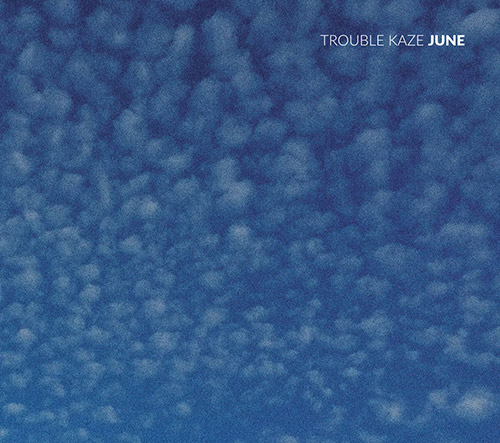
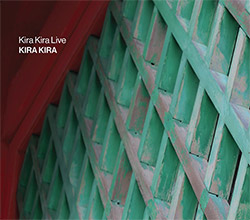

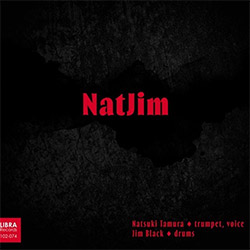
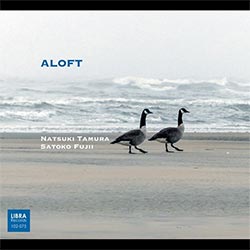









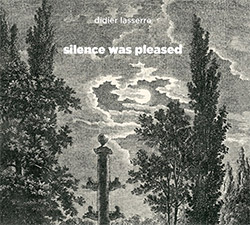

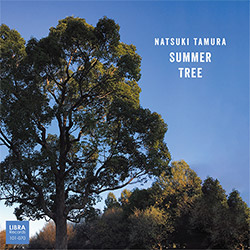
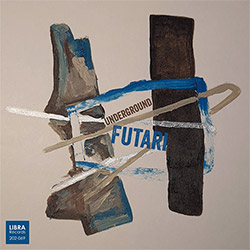
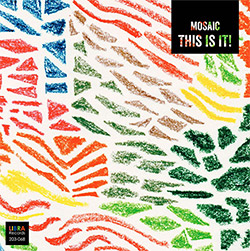

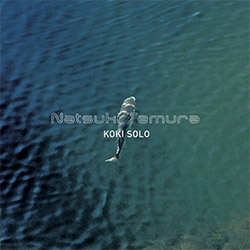
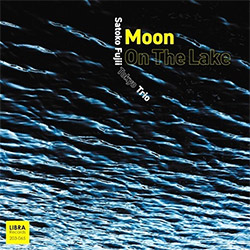

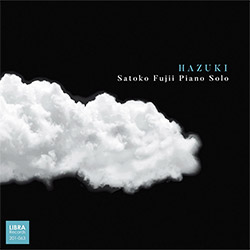
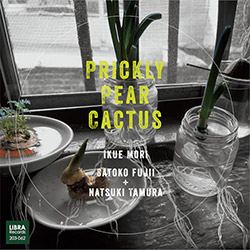














![Barker / Parker / Irabagon: Bakunawa [VINYL]](https://www.teuthida.com/productImages/misc4/35533.jpg)
![Blaser, Samuel / Marc Ducret / Peter Bruun: Dark Was The Night, Cold Was The Ground [VINYL 10-inch]](https://www.teuthida.com/productImages/misc4/35492.jpg)










![Warren, Kenny (Warren / Hoffman / Ellman): Sweet World [VINYL]](https://www.teuthida.com/productImages/misc4/35451.jpg)


![Blake, Ran / Dave Knife Fabris: Live Amsterdam 2006, First Visit [CD + POSTCARDS]](https://www.teuthida.com/productImages/misc4/35275.jpg)
![Sanna, Claudio: Compositori Sardi Contemporanei II [2 CDs]](https://www.teuthida.com/productImages/misc4/35317.jpg)












![Nevai, Nandor: <<The PRICE of FRONTIER>> Book 1: FULK [BOOK + 4 CDs]](https://www.teuthida.com/productImages/misc4/35464.jpg)
![Nevai, Nandor: <<The PRICE of FRONTIER>> Book 2: MARTIAL [BOOK + 4 CDs]](https://www.teuthida.com/productImages/misc4/35465.jpg)
![Nevai, Nandor: <<The PRICE of FRONTIER>> Book 3: JASSOM [BOOK + 4 CDs]](https://www.teuthida.com/productImages/misc4/35466.jpg)
![Nevai, Nandor: <<The PRICE of FRONTIER>> Book 4: HARD-WON [BOOK + 4 CDs]](https://www.teuthida.com/productImages/misc4/35467.jpg)

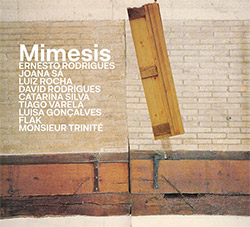




![DNS: Taking Big Bites Of The Khandas Three Cafes Deep [2 CDs]](https://www.teuthida.com/productImages/misc4/35334.jpg)




![Cleaver, Gerald: The Process [VINYL]](https://www.teuthida.com/productImages/misc4/34966.jpg)




![Alva Noto: HYbr:ID II [VINYL 2 LPs]](https://www.teuthida.com/productImages/misc4/35201.jpg)

![Baron, Derek / Luke Martin: Distinct and Concealed [CASSETTE + DOWNLOAD]](https://www.teuthida.com/productImages/misc4/35079.jpg)

![Lyle, Erica Dawn : Colonial Motels [CASSETTE + DOWNLOAD]](https://www.teuthida.com/productImages/misc4/35080.jpg)







![Alva Noto: HYbr:ID III [VINYL 2 LPs]](https://www.teuthida.com/productImages/misc4/35011.jpg)
![Kubisch, Christina / Trondheim Voices: Stromsanger 2022 For Six Voices And Electromagnetic Waves [VINYL]](https://www.teuthida.com/productImages/misc4/34628.jpg)








![Zurria, Manuel: Fame di Vento [3 CDs]](https://www.teuthida.com/productImages/misc4/35167.jpg)

![Granberg, Magnus / Nattens Inbrott / Skogen: Holde Traume, Kehret Wieder! [2 CDs]](https://www.teuthida.com/productImages/misc4/35038.jpg)
![Frey, Jurg: Outermost Melodie [2 CDs]](https://www.teuthida.com/productImages/misc4/35039.jpg)

![Pavone, Jessica: Reverse Bloom [VINYL]](https://www.teuthida.com/productImages/misc4/34895.jpg)




![Modney (Modney / Wooley / Gentile / Roberts / Pluta / Symthe / ...): Ascending Primes [2 CDs]](https://www.teuthida.com/productImages/misc4/34852.jpg)








![Elephant9 with Terje Rypdal: Catching Fire [VINYL 2 LPs]](https://www.teuthida.com/productImages/misc4/35355.jpg)
![Deerlady (Obomsawin, Mali / Magdalena Abrego): Greatest Hits [VINYL]](https://www.teuthida.com/productImages/misc4/34876.jpg)




![Haino, Keiji: Black Blues [2 CDs]](https://www.teuthida.com/productImages/misc4/35109.jpg)



![Surplus 1980: Illusion of Consistency [CD]](https://www.teuthida.com/productImages/misc4/35069.jpg)
![Staiano, Moe: Away Towards the Light [VINYL + DOWNLOAD]](https://www.teuthida.com/productImages/misc4/35037.jpg)
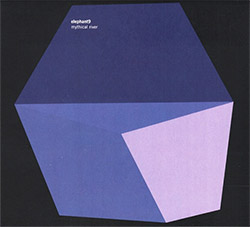



![Caveira (Gomes / Sousa / Abras / Ferrandini): Ficar Vivo [VINYL]](https://www.teuthida.com/productImages/misc4/34643.jpg)
![Gregg, J. J. / David Van Auken: Lunar Prairie [CD w/ DOWNLOAD]](https://www.teuthida.com/productImages/misc4/34611.jpg)

![Coultrain: Mundus [VINYL]](https://www.teuthida.com/productImages/misc4/32439.jpg)
![Mattin: Songbook #6 [VINYL]](https://www.teuthida.com/productImages/misc4/27317.jpg)
![Punkappella: Wake Up [7-inch VINYL]](https://www.teuthida.com/productImages/misc4/17519.jpg)
![Residents, The: WARNING: UNiNC.: Live And Experimental Recordings 1971-1972 [VINYL 2 LPs]](https://www.teuthida.com/productImages/misc4/31521.jpg)
![Coultrain: Phantasmagoria [VINYL]](https://www.teuthida.com/productImages/misc4/30142.jpg)
![Lennon, Sean Ono: Asterisms [VINYL]](https://www.teuthida.com/productImages/misc4/34517.jpg)

![Rotem Geffen: The Night Is The Night [VINYL]](https://www.teuthida.com/productImages/misc4/34631.jpg)
![Coley, Byron: Dating Tips for Touring Bands [VINYL]](https://www.teuthida.com/productImages/misc4/17906.jpg)

![Lost Kisses: My Life is Sad & Funny [DVD]](https://www.teuthida.com/productImages/misc4/lostKissesDVD.jpg)